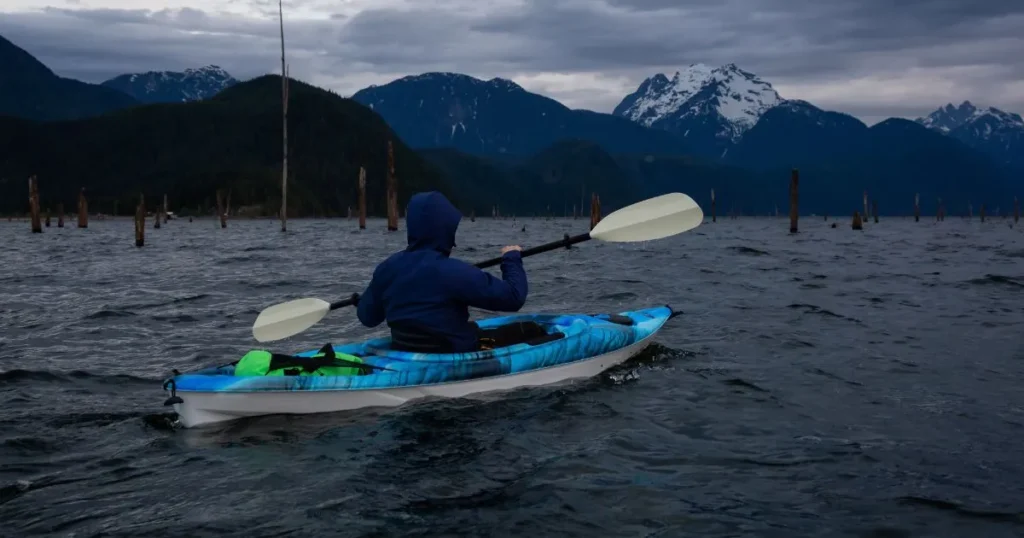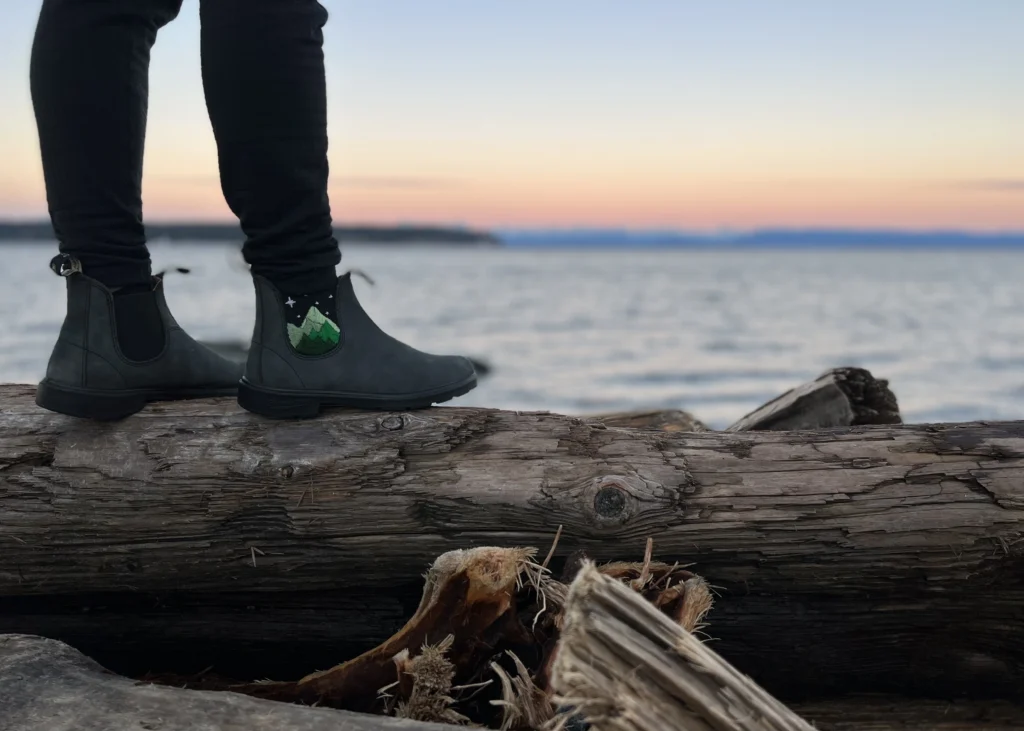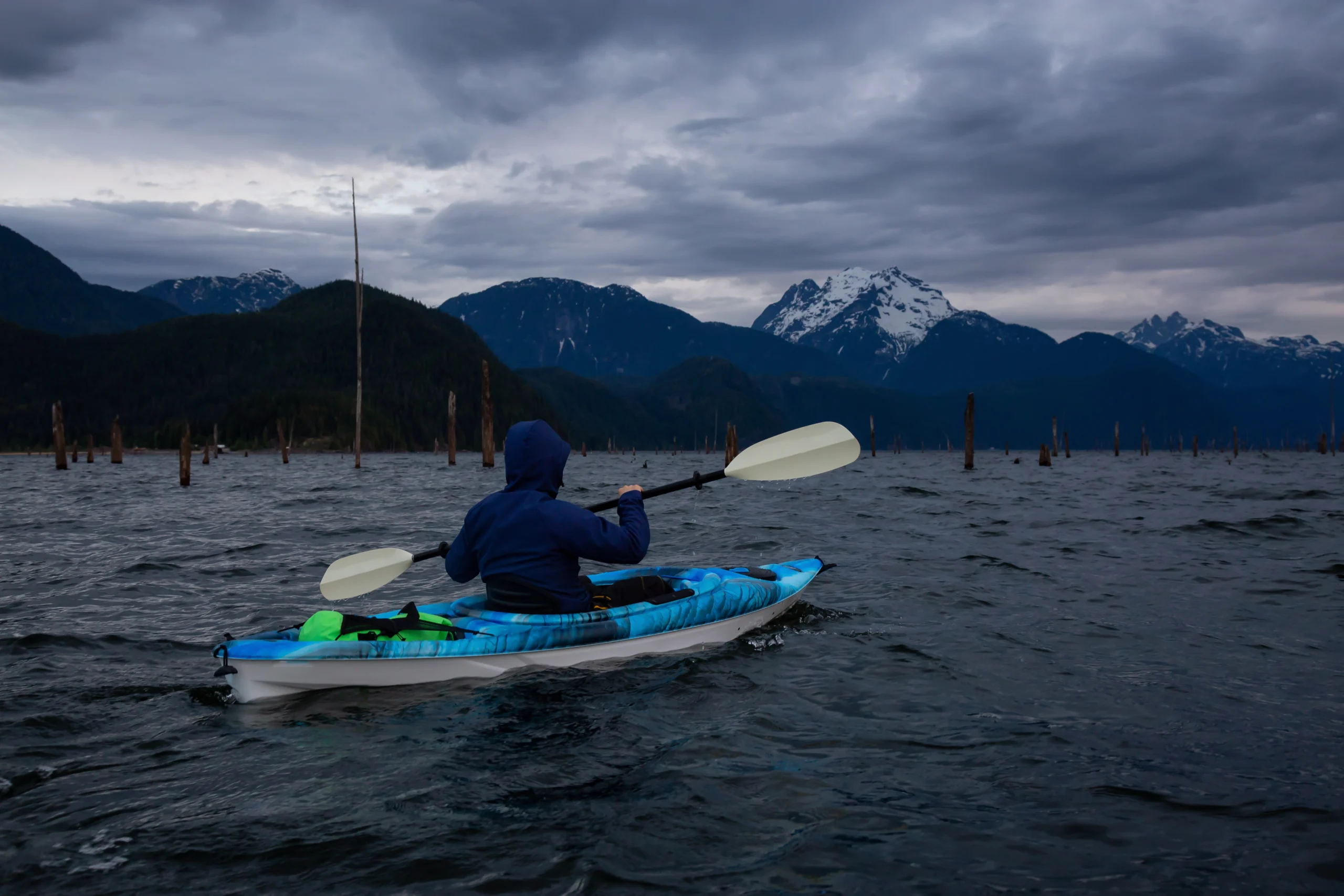Table of Contents
Kayaking is a thrilling way to immerse yourself in nature, from serene lakes to rushing rivers. However, your experience can quickly shift from joy to discomfort if you’re not dressed appropriately. The right attire doesn’t just ensure comfort—it also plays a vital role in your safety. Whether you’re paddling under the sun or braving chilly waters, knowing what to wear kayaking can make all the difference.
In this guide, you’ll learn how to gear up like a pro, no matter the conditions. Let’s dive into the essentials and ensure your next kayaking adventure is as smooth as possible.
Why Kayaking Attire Matters
Your choice of clothing can significantly impact your kayaking experience. Here’s why it’s important:
- Comfort: Spending hours in wet or ill-suited clothing can leave you cold, irritated, or even at risk for hypothermia in cooler conditions.
- Safety: Bright colors increase visibility on the water, while layers and materials protect you from sunburn, cold, or unexpected weather changes.
- Mobility: Proper kayaking attire ensures you can paddle without restrictions, making your trip more enjoyable and efficient.
By understanding these factors, you’re already taking the first step toward a successful outing.
Layering for Success: How to Dress for Different Weather Conditions
Dressing in layers is the golden rule of kayaking attire. This approach helps you adapt to varying temperatures and weather conditions. Let’s break it down:
Warm Weather Kayaking
In sunny, warm conditions, your main goals are staying cool, protecting yourself from UV rays, and avoiding materials that trap moisture.
Key Items to Wear:
- Moisture-Wicking Tops: Choose lightweight, breathable synthetic materials like polyester or nylon. Avoid cotton—it retains moisture and dries slowly.
- Quick-Drying Shorts or Swimwear: These keep you comfortable even when splashed with water.
- Sun-Protective Clothing: Long-sleeve UV shirts and rash guards offer excellent sun protection without overheating.
- Wide-Brim Hats: Shield your face and neck from direct sunlight.
- Water Sandals or Shoes: Opt for comfortable footwear with good grip to protect your feet during launches or landings.
Pro Tip: Always pack a lightweight rain jacket in case of sudden weather changes.
Cold Weather Kayaking

Cold water can be dangerous, making appropriate clothing critical. Dress in layers to retain heat and block the wind.
Key Items to Wear:
- Base Layer: Thermal tops and leggings made from synthetic fabrics or merino wool.
- Mid-Layer: Fleece jackets or neoprene vests for insulation.
- Outer Layer: Waterproof and windproof paddling jackets to keep you dry.
Optional for Extreme Cold:
- Wetsuit or Drysuit: Wetsuits trap a thin layer of water that your body warms, while drysuits keep you completely dry.
Transitional Weather Kayaking
When temperatures fluctuate, flexibility is key. Combine layers to adjust as needed, and keep extra clothes in a dry bag.
| Weather Condition | Recommended Clothing |
| Hot & Sunny | UV-protective shirts, quick-drying shorts |
| Cool & Breezy | Thermal base layers, fleece, paddling jackets |
| Cold & Windy | Neoprene wetsuit/drysuit, waterproof jacket |
Footwear for Kayaking: Protect and Support Your Feet

Choosing the right footwear is essential for comfort and safety on the water.
Features to Prioritize
- Water Resistance: Shoes should handle wet conditions without retaining water.
- Grip: Ensure your footwear offers traction on slippery surfaces.
- Protection: Avoid cuts or injuries from sharp rocks or debris.
Recommended Options
- Neoprene Booties: Ideal for cold water; they provide insulation and grip.
- Water Sandals or Shoes: Perfect for warm weather, offering ventilation and protection.
- Avoid: Flip-flops, which can slip off, and bulky hiking boots, which may hinder movement.
Accessories That Enhance Your Kayaking Experience
The right accessories can elevate your comfort and safety.
Headwear and Eyewear
- Hats: A wide-brim hat offers sun protection, while a beanie keeps you warm in cooler weather.
- Sunglasses: Choose polarized sunglasses to reduce glare and add a retainer strap to keep them secure.
Gloves and Paddling Extras
- Paddling Gloves: Prevent blisters and keep hands warm in colder conditions.
- Waterproof Gear Straps: Secure your essentials to the kayak for convenience and safety.
Safety Gear
- Personal Flotation Device (PFD): Wear a PFD over your clothing at all times for safety.
- Dry Bags: Store valuables, snacks, and extra clothes to keep them dry.
Choosing the Right Materials and Colors
Materials
- Synthetic Fabrics (Nylon, Polyester): Quick-drying and lightweight, they’re perfect for active water sports.
- Merino Wool: A great choice for insulation in cold weather—it stays warm even when damp.
- Avoid Cotton: It absorbs water, making it heavy and uncomfortable.
Colors
- Bright Colors: Improve visibility on the water, especially in crowded or low-visibility conditions.
- Dark Colors: Help retain heat in cooler weather but may not stand out as well for safety.
Common Mistakes to Avoid
Even experienced paddlers can make clothing mistakes. Here’s what to steer clear of:
- Wearing Cotton: It gets wet and stays wet, leaving you cold and uncomfortable.
- Ignoring Weather Forecasts: Always check conditions before heading out to avoid being unprepared.
- Skipping Safety Gear: Never compromise on essentials like a PFD or appropriate footwear.
FAQs: What to Wear Kayaking
Q: What should I wear for kayaking in cold weather?
Wear thermal base layers, insulating mid-layers like fleece, and waterproof outer layers. For extreme cold, consider a wetsuit or drysuit.
Q: Can I kayak in regular athletic clothes?
While athletic clothes might work in a pinch, synthetic, quick-drying materials are better suited to kayaking due to their water resistance.
Q: Do I need special shoes for kayaking?
Yes. Water-resistant shoes with grip protect your feet and provide stability. Avoid casual footwear like flip-flops.
Q: What do beginners often overlook when dressing for kayaking?
Beginners frequently forget about layering, sun protection, and the importance of dry bags for carrying extra clothes.
Conclusion: Paddle Comfortably, Paddle Safely
Now that you know what to wear kayaking, you’re better prepared to tackle any waterway with confidence. Dressing appropriately enhances your comfort, keeps you safe, and allows you to focus on the beauty around you rather than discomfort.
So, pack your layers, strap on your PFD, and get ready to create unforgettable memories on the water. If you found these tips helpful, share them with fellow paddlers or drop your own advice in the comments below!
By following these guidelines, your next kayaking adventure will be one for the books. Get out there and enjoy the water like never before!

